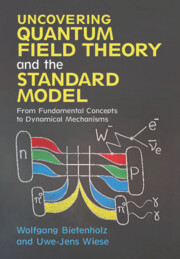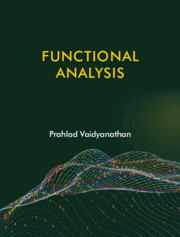Refine search
Actions for selected content:
37953 results in Cambridge Textbooks

Uncovering Quantum Field Theory and the Standard Model
- From Fundamental Concepts to Dynamical Mechanisms
-
- Published online:
- 06 February 2025
- Print publication:
- 02 January 2025
-
- Textbook
- Export citation

Functional Analysis
-
- Published online:
- 31 January 2025
- Print publication:
- 21 September 2023
-
- Textbook
- Export citation
V - 1976– : A New Liberalism?
-
- Book:
- Modern Britain, 1750 to the Present
- Published online:
- 14 January 2025
- Print publication:
- 30 January 2025, pp 481-525
-
- Chapter
- Export citation
3 - An Imperial Economy and the Great Transformation
- from I - 1750–1819: The Ends of the Ancien Régime
-
- Book:
- Modern Britain, 1750 to the Present
- Published online:
- 14 January 2025
- Print publication:
- 30 January 2025, pp 75-110
-
- Chapter
- Export citation
2 - Three-Body Systems
-
- Book:
- Celestial and Stellar Dynamics
- Published online:
- 16 January 2025
- Print publication:
- 30 January 2025, pp 17-40
-
- Chapter
- Export citation
8 - Collisionless Stellar Systems
-
- Book:
- Celestial and Stellar Dynamics
- Published online:
- 16 January 2025
- Print publication:
- 30 January 2025, pp 157-179
-
- Chapter
- Export citation
Copyright page
-
- Book:
- Celestial and Stellar Dynamics
- Published online:
- 16 January 2025
- Print publication:
- 30 January 2025, pp iv-iv
-
- Chapter
- Export citation
Chapter Ten - Explicit Memory and Disease
-
- Book:
- Cognitive Neuroscience of Memory
- Published online:
- 12 June 2025
- Print publication:
- 30 January 2025, pp 233-260
-
- Chapter
- Export citation
Acknowledgments
-
- Book:
- Cognitive Neuroscience of Memory
- Published online:
- 12 June 2025
- Print publication:
- 30 January 2025, pp xvii-xviii
-
- Chapter
- Export citation
10 - Relaxation and Collisional Systems
-
- Book:
- Celestial and Stellar Dynamics
- Published online:
- 16 January 2025
- Print publication:
- 30 January 2025, pp 201-219
-
- Chapter
- Export citation
Glossary
-
- Book:
- Cognitive Neuroscience of Memory
- Published online:
- 12 June 2025
- Print publication:
- 30 January 2025, pp 303-315
-
- Chapter
- Export citation
6 - Practising Democracy
- from II - 1819–85: Becoming Liberal and Global
-
- Book:
- Modern Britain, 1750 to the Present
- Published online:
- 14 January 2025
- Print publication:
- 30 January 2025, pp 190-224
-
- Chapter
- Export citation
References
-
- Book:
- Cognitive Neuroscience of Memory
- Published online:
- 12 June 2025
- Print publication:
- 30 January 2025, pp 316-349
-
- Chapter
- Export citation
Dedication
-
- Book:
- Cognitive Neuroscience of Memory
- Published online:
- 12 June 2025
- Print publication:
- 30 January 2025, pp v-vi
-
- Chapter
- Export citation
Figures
-
- Book:
- Cognitive Neuroscience of Memory
- Published online:
- 12 June 2025
- Print publication:
- 30 January 2025, pp xi-xiv
-
- Chapter
- Export citation
Chapter Nine - Memory and Other Cognitive Processes
-
- Book:
- Cognitive Neuroscience of Memory
- Published online:
- 12 June 2025
- Print publication:
- 30 January 2025, pp 208-232
-
- Chapter
- Export citation
2 - An Enlightened Civil Society?
- from I - 1750–1819: The Ends of the Ancien Régime
-
- Book:
- Modern Britain, 1750 to the Present
- Published online:
- 14 January 2025
- Print publication:
- 30 January 2025, pp 40-74
-
- Chapter
- Export citation
Author Index
-
- Book:
- Cognitive Neuroscience of Memory
- Published online:
- 12 June 2025
- Print publication:
- 30 January 2025, pp 350-365
-
- Chapter
- Export citation
12 - The Ends of Social Democracy
- from IV - 1931–76: Society Triumphant
-
- Book:
- Modern Britain, 1750 to the Present
- Published online:
- 14 January 2025
- Print publication:
- 30 January 2025, pp 435-480
-
- Chapter
- Export citation
Graphs
-
- Book:
- Modern Britain, 1750 to the Present
- Published online:
- 14 January 2025
- Print publication:
- 30 January 2025, pp xvii-xvii
-
- Chapter
- Export citation
